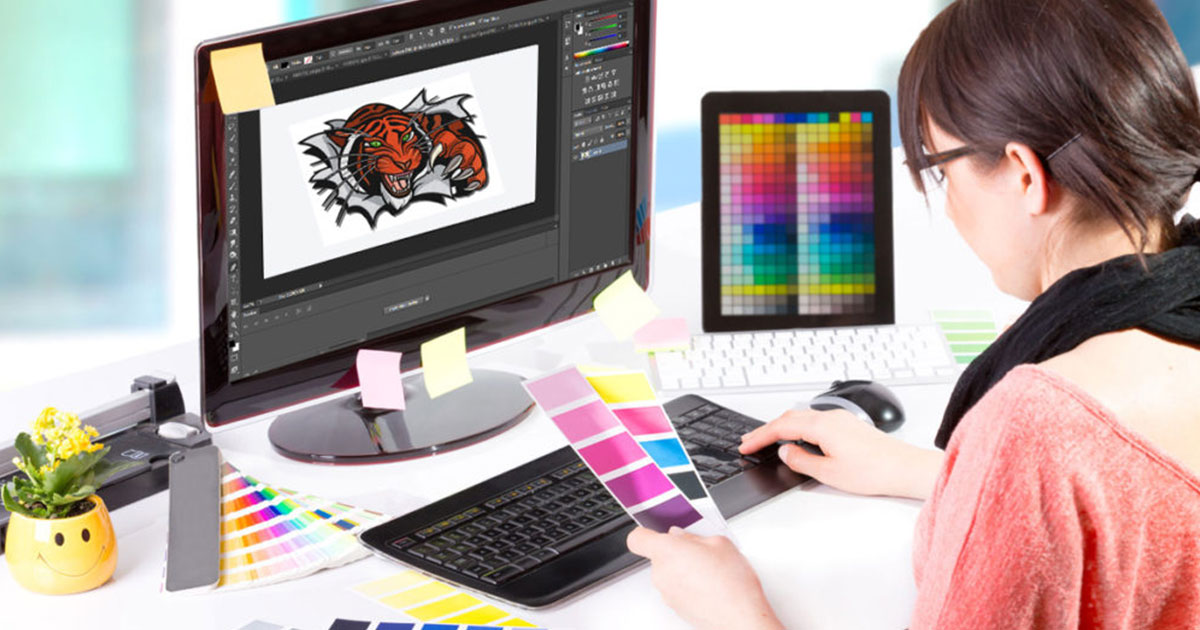Discover Different Types of Needlework Digitizing Methods
Needlework digitizing has actually evolved significantly over the years, using a myriad of methods to bring styles to life in the digital world. The world prolongs to more sophisticated techniques like photorealistic embroidery digitizing and the remarkable realm of 3D embroidery digitizing.
Traditional Hand Needlework Digitizing
Standard hand embroidery digitizing includes the procedure of transforming complex hand-stitched layouts into digital formats for device needlework. This technique needs proficient craftsmens to carefully assess the handcrafted design and afterwards use specialized software program to recreate it in a digital style. Each stitch, shade, and information should be very carefully translated to guarantee that the essence of the original hand embroidery is preserved in the digital version.
One of the crucial obstacles of traditional hand embroidery digitizing is recording the complexities and nuances of the handmade layout. Digitizing for Embroidery. Artisans have to have a deep understanding of various needlework strategies, such as satin stitch, chain stitch, and French knots, to properly reproduce these techniques in the digital realm. Furthermore, they need to have a keen eye for information to make certain that the electronic design preserves the exact same degree of artistry and workmanship as the original hand-stitched piece
Punching Method
To perfectly shift from standard hand embroidery digitizing to the punching method, craftsmens should now concentrate on converting the complex digital layouts into guidelines that embroidery equipments can analyze. The punching technique involves utilizing specialized software program to develop digital data that include commands for the needlework machine to adhere to. This process requires a deep understanding of not simply the layout itself however also the abilities and restrictions of the needlework equipment.

Auto-Digitizing Software Programs
Needlework digitizing has been reinvented by the introduction of auto-digitizing software application, supplying artisans with advanced tools to convert electronic styles into needlework device read directions effectively. Auto-digitizing software application use formulas to examine digital images or vector files and produce embroidery layouts automatically. These programs enable quick and accurate conversion of complex styles into stitch patterns, saving effort and time for embroiderers.
One of the crucial benefits of auto-digitizing software is its straightforward user interface, making it accessible to both newbies and seasoned digitizers. These programs typically include attributes such as stitch modifying devices, thread shade matching, and the ability to sneak peek the final embroidered style. Additionally, auto-digitizing software can deal with intricate styles with several colors and complex details, generating high-grade needlework files ideal for numerous apparel and textile jobs.
While auto-digitizing software uses benefit and efficiency, it is important for customers to comprehend the restrictions of automated digitizing. Fine-tuning and manual modifications might still be needed to attain the preferred embroidery quality, particularly when managing detailed or unique styles. By leveraging the capacities of auto-digitizing software click to read program alongside hands-on digitizing strategies, craftsmens can enhance their needlework digitizing procedure and develop spectacular stitched pieces.
Photorealistic Needlework Digitizing
Utilizing advanced digital imaging strategies, accomplishing photorealistic lead to embroidery digitizing has actually come to be a sought-after ability among modern artisans. This technique entails converting high-resolution photos into complex stitch patterns that closely mimic the original design, resulting in needlework items that display natural information and deepness.
To accomplish photorealistic embroidery digitizing, artisans have to possess a keen eye for information and an extensive understanding of exactly how various stitch types and thickness can affect the last outcome. By thoroughly drawing up each color and color in the photo, embroiderers can develop an electronic file that guides the needlework maker to duplicate the nuances of the original picture properly.
Photorealistic embroidery digitizing is especially prominent in creating custom layouts for garments, home decor, and art pieces where recording the essence of a photograph or artwork is critical. This method allows artisans to transform memories, landscapes, portraits, and elaborate art work right into spectacular embroidered work of arts that display a blend of standard craftsmanship and innovative innovation.
3D Needlework Digitizing
With the innovation of digital imaging techniques in achieving photorealistic results in needlework digitizing, the expedition of 'D Embroidery Digitizing' offers a new dimension to the complexities of style duplication. 'D Needlework Digitizing' refers to the three-dimensional digitizing strategy that adds depth and structure to needlework layouts, creating a much more practical and visually appealing end product. This technique utilizes software program that replicates the result of light and darkness on the embroidery layout, enhancing its general aesthetic influence.
Among the vital benefits of 'D Needlework Digitizing' is its capacity to make layouts look more realistic and vibrant. By adding depth to the embroidery design, the last item appears much more sensible and fascinating (Digitizing for Embroidery). Additionally, this method allows for even more creative liberty in design implementation, enabling embroiderers to experiment with various appearances and impacts that were formerly challenging to attain
Final Thought

Comments on “Budget-friendly Digitizing for Embroidery: Accuracy and Information”